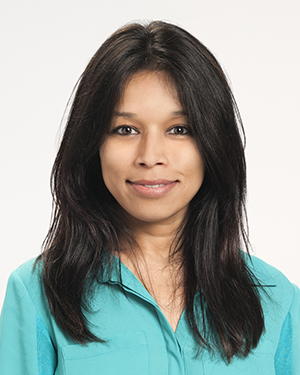Research News
06/06/2019
$3M Grant to Test Novel Brain Stimulation Technique in Patients with Post-Stroke Paralysis
The novel therapy combination targets the uninjured hemisphere

Lerner Research Institute’s Ela Plow, PhD, PT, recently received a 5-year, $3.11 million grant from the National Institute of Child Health and Human Development, part of the National Institutes of Health, to test an innovative combination of a novel therapies’ ability to restore arm and hand function in patients who have suffered upper limb paralysis following stroke. This therapy combines a new method of brain stimulation that targets the intact, or uninjured, hemisphere with a novel rehabilitation therapy.
Current brain stimulation techniques target the hemisphere injured by stroke. Unfortunately, this method is less effective for patients with more extensive paralysis. Dr. Plow, Department of Biomedical Engineering, believes that targeting the uninjured hemisphere may be more successful in helping restore upper limb movement and functionality to patients with little arm or hand movement following stroke. This is the first study that seeks to enhance the activity of the intact hemisphere using non-invasive brain stimulation.
The clinical trial will test how this new brain stimulation technique may enhance the effects of a novel rehabilitation therapy called Contralaterally Controlled Functional Electrical Stimulation (CCFES), which was developed by Dr. Plow’s colleague, Jayme Knutson, PhD, Department of Physical Medicine & Rehabilitation, MetroHealth System, and Case Western Reserve University (CWRU) School of Medicine.
Current standard-of-care rehabilitation therapies for patients with upper limb paralysis require significant residual movement of the hand or wrist. Unfortunately, this excludes many stroke survivors from receiving these therapies. CCFES, on the other hand, does not require patients to retain wrist or hand movement, so it can be given to this population of patients.
The trial will enroll 72 patients with stroke-related upper limb paralysis. Participants will be randomly assigned to one of three treatment groups, all of which will receive CCFES. Two groups will also receive two different methods of non-invasive brain stimulation. A third group, the placebo group, will receive sham brain stimulation. After 12 weeks, the participants’ arm and hand function will be assessed.
In addition, the researchers also seek to identify the underlying neurophysiological mechanisms at play, as well as biomarkers that indicate which patients are most likely to benefit from this treatment.
Dr. Plow’s co-investigators on this study include Cleveland Clinic’s Ken Uchino, MD, Ken Sakaie, PhD, and Xiaofeng Wang, PhD, and MetroHealth’s Jayme Knutson, PhD, and David Cunningham, PhD. “While the work of many helped to make this award possible, I would like to specifically thank Andre Machado, MD, PhD, Cleveland Clinic, John Chae, MD, MetroHealth System. I would also like to thank Cleveland Clinic, CWRU and the Louis Stokes Cleveland VA Medical Center for their guidance and support,” says Dr. Plow. “Because of cross-institution collaborations like this, Cleveland has truly become a destination for stroke rehabilitation and brain stimulation research.”
For more information, visit https://clinicaltrials.gov/ct2/show/NCT03870672 or contact the study team at 1-866-449-1394 or [email protected] or [email protected].
Featured Experts
News Category
Related News
Research areas
Want To Support Ground-Breaking Research at Cleveland Clinic?
Discover how you can help Cleveland Clinic save lives and continue to lead the transformation of healthcare.
Give to Cleveland Clinic